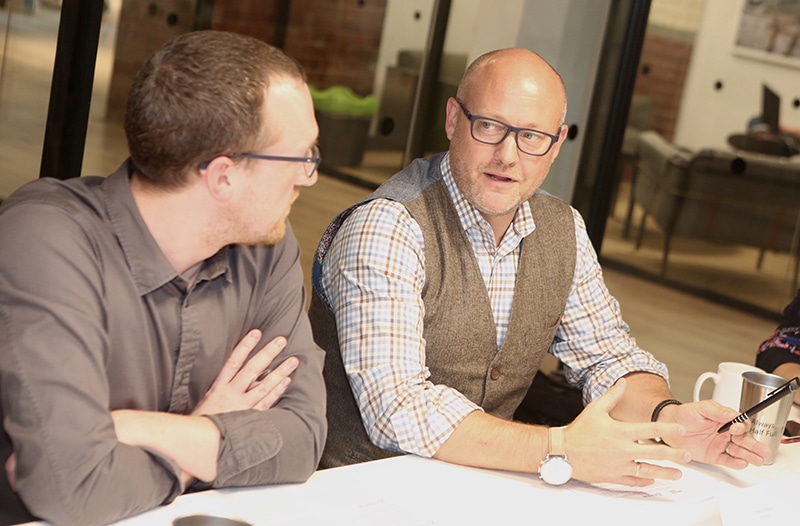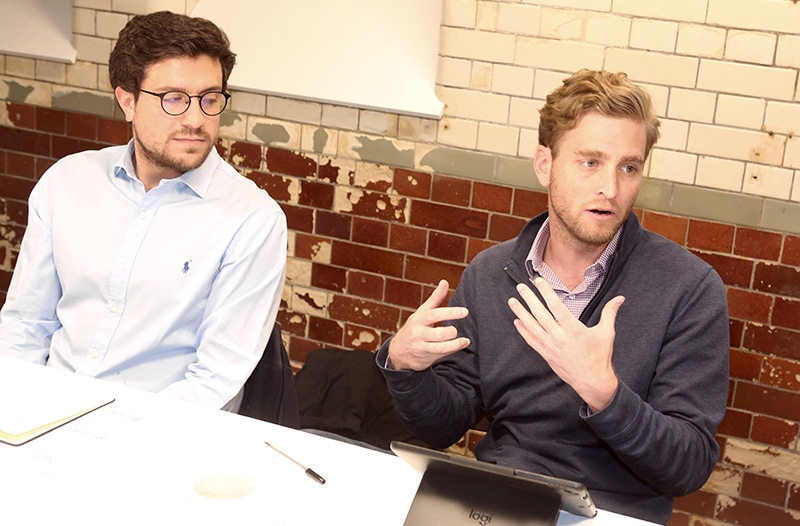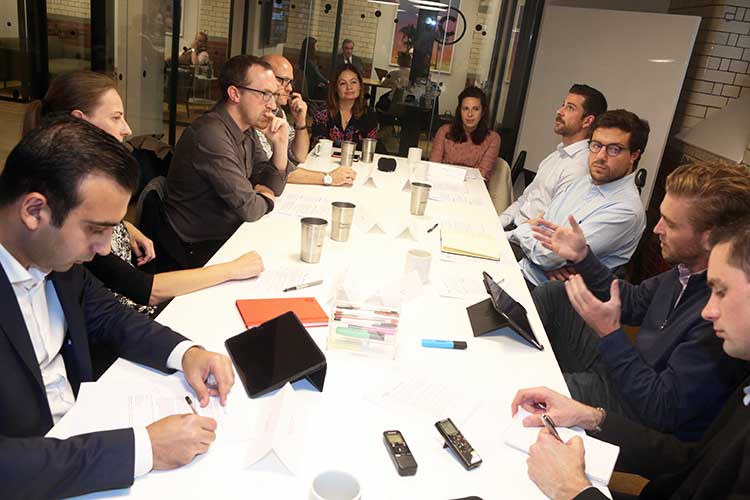The global construction industry is undergoing massive change. Like every sector, technology is rapidly shifting how construction and engineering firms design, manage and build projects.
On October 14, Bluebeam executives participated in a roundtable discussion in the U.K. on this topic with other influential technology executives of construction, design and engineering firms.
The Participants:
- Denise Chevin, Editor BIM+
- Joe Williams, VP of Global Industry Insights, Bluebeam, Inc.
- James Chambers, Regional Director UKI, Bluebeam, Inc.
- Shervin Yousefzadeh, Digital Construction Manager – Civils, Graham Group
- Davide Gatti, BIM Manager, Multiplex
- Donatella Fiorella, BIM Manager, ISG
- Urszula Kanturska, Construction Data & Technology Integration Lead, Bylor JV – Hinkley Point C
- Nelly Twumasi-Mensah, Business Projects and Change Lead, Faithful and Gould
- Martin Coyne, BIM Practice Manager, KPF
- Andrew Gamblen, Digital Manager, Willmott Dixon
During the conversation, each executive shared their perspective on how construction, design and engineering firms can better address the challenges brought by evolving industry technology—from determining how to influence late-adopters to finally make the transition from paper to digital, to identifying the return on investment of new technology.
Here are five takeaways from the discussion:
Tech adoption is a “show, don’t tell” proposition
Demonstrating that technology can make work more efficient to project teams still reliant on traditional methods is a big challenge for the construction industry.
As part of getting those late-adopters to transition to the new, digital world, the executives participating in the roundtable discussion agreed that showing the “facts and figures” of how new technology can improve the speed, effort and efficiency of traditional workflows is a big part of influencing the change.
However, as Shervin Yousefzadeh, digital construction manager of Graham Group, pointed out, sometimes people also need to experience the impact the technology can have on their jobs first-hand to understand the real value.
“You can sit there and present for two hours telling them about the value [of technology],” Yousefzadeh said. “They need to see the value; they need to see fact; and they also need to experience that.”
Oftentimes, the most impactful way to convince late-adopters of the virtues of new technology is showing them the true return on the time they’ll save. This was the case for Yousefzadeh when his firm spent two weeks demonstrating how much time a paper-based team’s switch to tablets would save it.
“Once they saw these benefits, they started to believe in that technology, they start to use it better and better, and they could save more time and have more time for themselves,” Yousefzadeh said.
There should be a designated digital innovation team or leader inside a company
Digital adoption isn’t going to happen on its own, especially with the speed at which technology is changing.
As a result, the panelists agreed that every construction firm—from general contractors to engineering and design firms—need to have a dedicated person or team owning and driving the firm’s technology adoption and innovation.

“Somebody does need to own it and somebody does need to drive it,” said Urszula Kanturska, construction data and technology integration lead at Bylor JV – Hinkley Point C. “I think what worked for us really well is that we do have a designated team and we do have embedded application developers who do integration, business intelligence, requirements, gathering processes, all together embedded in the construction team.”
Adopting new technology has never been easier for small- to medium-sized firms
One might initially think that larger, enterprise-level firms have the advantage when it comes to new technology investments, since they likely have the resources to invest in best-in-class solutions and the power to implement them at scale.
But nowadays, due to the mobile and flexible nature of today’s platforms, that advantage may not exist—in fact, smaller firms might even have the upper hand.
“Most people have these digital devices now; you can download apps for free or for a few dollars,” said Joe Williams, Bluebeam’s vice president of global industry insights. “If you don’t even have a BIM machine, you can rent one with the software on it from a virtual machine. The overhead to get into this space I think is lower than it’s ever been.”
Added Martin Coyne, BIM practice manager at architecture firm KPF: “I think sometimes it’s easier for the smaller businesses. You don’t have the resistance to change that you do in larger businesses. Some of the biggest success cases we’ve seen in years have been small, 15-20 person practices that can out-compete with larger practices just because they’ve committed across the whole business to using the smarter technology.”
Return on investment (ROI) is still difficult to prove
With implementation of new construction and engineering technology is an expectation that firms are able to justify the cost of the investment to project stakeholders.
While many of the products coming to market are undoubtedly making projects faster and more efficient, showing that value in hard numbers is still challenging.
“I think this is something we always struggled with,” said Bluebeam’s Williams, referring to his time working for Dallas, Texas-based general contractor Rogers-O’Brien Construction. “In the early days, we didn’t have any projects that were completed yet, and many projects were 12, 18 or 24 months, so waiting that time period to calculate things was not an option. What we looked for instead were mistakes that we could’ve prevented.”

For instance, on one project a surveying team had to hand key in some coordinates, and in doing so transposed some numbers that put a pier in the wrong place. “It was a $15,000 mistake,” Williams said. “That single mistake could’ve been corrected with just having the digital information and feeding it directly into the surveying device.”
Davide Gatti, BIM manager at Multiplex, said one of the things his firm does is conduct mockups showing the comparison of results using both a traditional method and the new technology on the same site.
“When we’re looking for a new technology, we always try to compare it with a traditional period,” Gatti said. “It’s all about timing. A person doing a task for a certain time; we can, of course, reduce the time and then we know how that person is charged with the project in the prelims. We can definitely measure that.”
Culture change remains the industry’s biggest tech adoption challenge
“Construction is very traditional,” said Donatella Fiorella, BIM manager at ISG. “[The industry doesn’t] want to change … I think it’s just shifting ourselves toward one other approach, where actually we know tomorrow there will be another tool, we will always do the same, but with different tools. I don’t like to say, ‘Oh, we have something new here.’ No, we have always the same—just a little tool to do it in a slightly different way. I think that it’s just our mindset that should change.”











